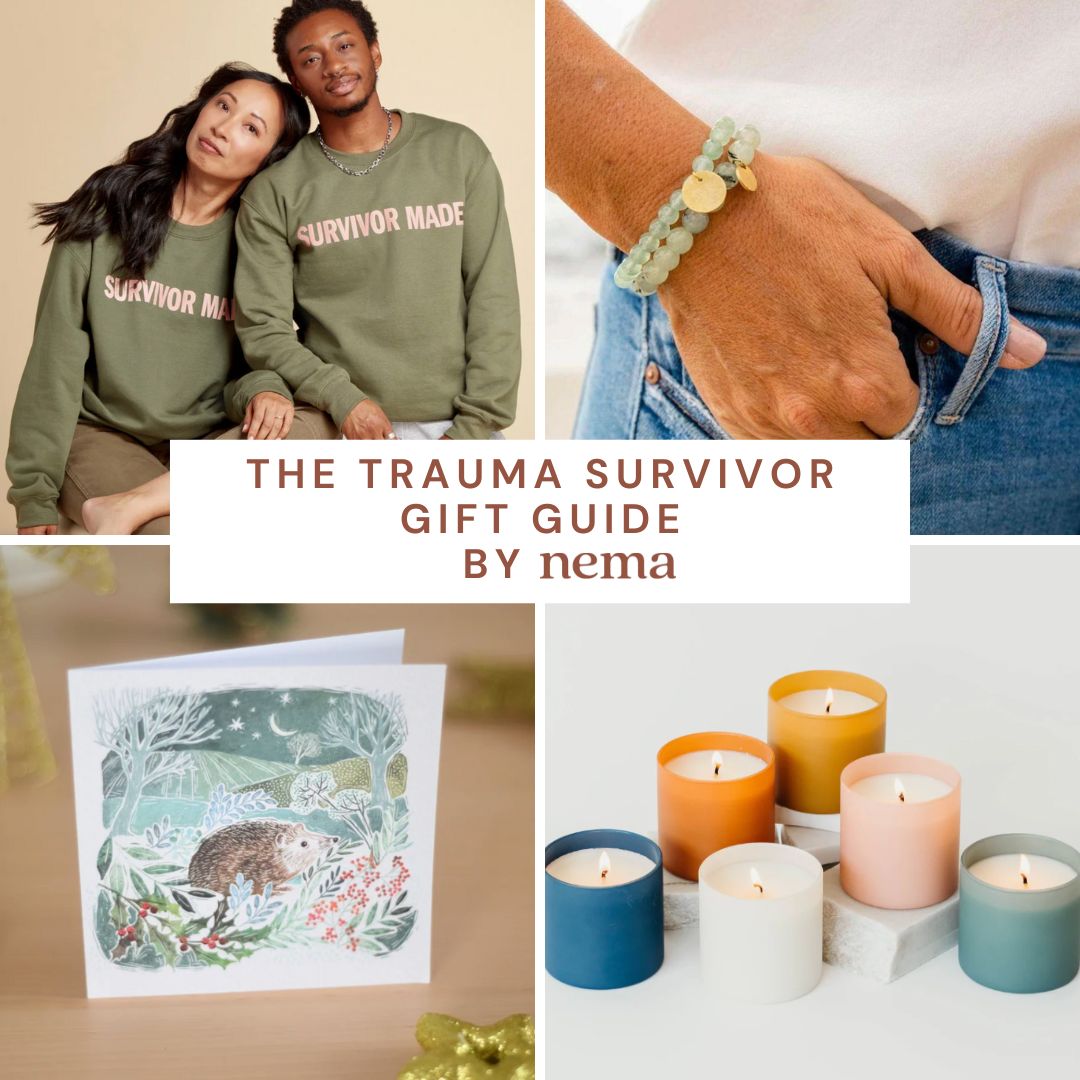Why We Don't Believe in "Big T" Vs. "Little T" Trauma
The word “trauma” has become so mainstream, some have even taken to categorizing traumas by severity — something Noori says is not only inaccurate, but potentially harmful.

If you’ve noticed an uptick in the use of the word “trauma,” you’re not imagining things. In fact, a 2022 Vox feature declared “trauma” the word of the decade, citing examples in movies, shows, books, podcasts, and even celebrity interviews.
“Trauma is a buzzword all over social media, TV, Gen Z, TikTok, etc.,” says Nema Co-founder and CEO, Sofia Noori, MD, MPH. “Young people talk about being traumatized by everything from breakups or a friendship fallout to a bad haircut or a rude boss. And then there are the more grave examples like childhood abuse and racial violence and sexual assault.”
The word “trauma” has become so mainstream, some have even taken to categorizing traumas by severity — something Noori says is not only inaccurate, but potentially harmful. “Many laypeople and even therapists use the term ‘big T’ and ‘little t’ traumas to describe how some traumas meet the clinical definition of a trauma (‘big T’), whereas other events feel traumatic and are still referred to as traumas (‘little t’),” Noori explains. “An example of a ‘big T’ trauma would be a sexual assault, whereas a ‘little t’ trauma could be a bad breakup. At Nema, we don’t like to use the terms ‘big T’ trauma and ‘little t’ trauma.”
Read on to understand why the labels “big T” and “little t” don’t do trauma justice, and why these misleading categorizations can actually deter people from getting the care they need and deserve.
How “clinical” trauma differs from the popular definition of “trauma”
The Diagnostic and Statistical Manual of Mental Disorders, Fifth Edition (DSM-V), outlines the diagnostic criteria required for a PTSD diagnosis in categories designated criterion A-H. Criterion A includes direct or indirect exposure to death, a death threat, actual or threatened serious injury, or actual or threatened sexual violence. Criterion A traumas can also involve witnessing these traumas or learning that they happened to a close relative or friend.
“At least seventy percent of Americans have already suffered a criterion A trauma,” Noori says. “If we call anything that makes people feel ‘traumatized’ a trauma, then literally everybody has experienced a trauma.”
That said, it’s important to note that there are individual differences in how people cope with major stress, so while most people exposed to traumatic events will not develop PTSD, others will. “We don't want to be dismissive of people who experience difficult life experiences like divorce, job loss, etc., which are not considered clinical criterion A trauma, but are distressing,” Noori says. “If you feel distressed, then it is distressing. The problem societally is that we are conflating ‘trauma,’ which has a clinical meaning, with its popular meaning and suggesting that any distressing event is trauma.”
Noori also believes that labeling traumas as “big” or “little” inevitably invalidates people’s experiences. “Just because something doesn’t qualify as a criterion A clinical trauma doesn’t mean it wasn’t life-changing or hurtful,” Noori says. “A person’s perceptions of their life events are valid. However, the therapy field has historically tended to focus on major life events as a key component of trauma conditions listed in the DSM.”
Originating from the work of Dr. Francine Shapiro, now best known for the creation of Eye Movement Desensitization and Reprocessing (EMDR), “little t” traumas were coined to capture the distressing events people experience more frequently — like emotional neglect or indifference, social humiliation, and family issues — but that did not meet the severity bar for major life events. Shapiro theorized that these smaller events could also result in long-term difficulties.
But as the term “trauma” has taken on a broader popular meaning that is distinct from its clinical definition, Noori feels the meaning of the term has been diluted, subsequently confusing or discouraging people from seeking help. “This is likely a byproduct of our society veering towards therapy-speak,” Noori says. “It’s also probably a backlash towards the fact that the academic establishment didn’t recognize PTSD until recently, and has been slow to recognize PTSD as a spectrum of disorders and phenotypes. We know that trauma therapies also work for distress regardless of if people actually have full blown PTSD, so it’s overall very confusing for patients.”
“Many people relate to the idea of complex trauma, or what is sometimes known as many ‘little ts' in a way that’s akin to death by a thousand cuts,” Noori says. “The DSM just opened up a new category of disorders called ‘trauma and stress related disorders,’ of which PTSD is under. The idea is that there is a spectrum of disorders under this umbrella now. I wish there were some other term besides ‘chronic stress,’ but there isn’t, which is why trauma and PTSD get stretched into that.”
Treating different kinds of trauma
While a range of PTSD treatments exist, Cognitive Processing Therapy (CPT) and Prolonged Exposure (PE) are the most effective evidenced-based treatments and are considered first-line therapies. While these are the gold standard of trauma treatment, other treatments have demonstrated success, including EMDR and certain medications.
While EMDR is one type of PTSD treatment that has shown to be beneficial to many, it remains a second-line treatment due to less substantial evidence. One potential benefit of EMDR, however, is that it may help address a variety of different types of trauma. “Part of the appeal of that treatment approach is that it treats distressing events (‘little ts’) that would not be considered traumatic enough to treat with CPT and PE and I think people actually find that affirming,” says Nema Clinical Director, Lashauna Cutts, LCSW.
It’s also important to note that the above treatments are indicated for a clinical PTSD diagnosis, meaning they may not be appropriate for all types of trauma. “CPT also works for any distressing event, but clinicians aren’t encouraged to use it for everything,” Noori says. “Currently, Nema only treats PTSD with Criterion A trauma events and presence of PTSD symptoms. We are hoping to eventually expand into adjustment or acute stress disorder, which are often what people struggle with after the death of a loved one, divorce, etc.”
When it comes to the dialogue used in trauma treatment, clinicians typically begin with the most severe trauma or event that most significantly negatively impacted someone's life, but the full motif of someone's various ‘little t’ traumas play a large part in healing. “For example, while many patients come in with one key presenting trauma that is often most recent or memorable, they often actually endured something earlier in life that becomes identifiable as their core trauma,” Noori says. “The chronic or subsequent traumas that followed are a version of ‘death by a thousand cuts’ and are incorporated into their treatment.”
If you’re struggling with trauma, know that recovery and healing is possible. Therapists at Nema are trained in CPT and other evidence-based treatments for PTSD. If you're interested in learning if Nema is right for you, schedule a free consultation.






